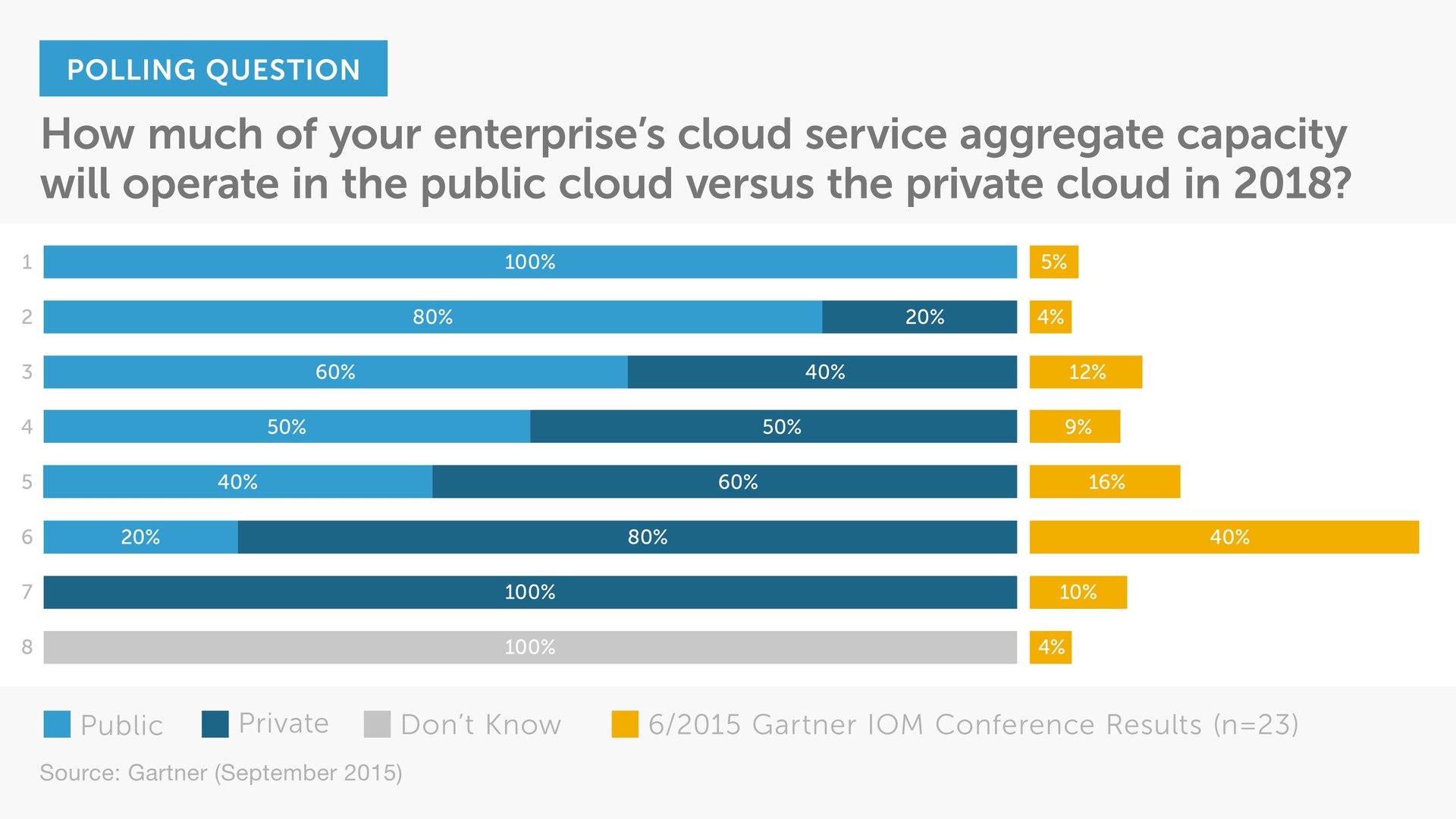What drives the move to the private cloud?
In an effort to increase agility and spur innovation, many enterprises have turned to public cloud computing, a service offering that’s forecast to grow at 15.2% through 2019. Private cloud computing has the attributes of public cloud computing, except that the services are not shared with other enterprises—they are for the use of a single enterprise’s business units (or shared only with its partners). The preponderance of Gartner’s survey data below points to significant use and investment in private cloud computing both now and in the future, and to the desire by nearly all enterprises to have a hybrid model of IT that employs both private and public cloud for tailored operations.

In an effort to increase agility and spur innovation, many enterprises have turned to public cloud computing, a service offering that’s forecast to grow at 15.2% through 2019. Private cloud computing has the attributes of public cloud computing, except that the services are not shared with other enterprises—they are for the use of a single enterprise’s business units (or shared only with its partners). The preponderance of Gartner’s survey data below points to significant use and investment in private cloud computing both now and in the future, and to the desire by nearly all enterprises to have a hybrid model of IT that employs both private and public cloud for tailored operations.

As the chart indicates, businesses see distinct value in both private and public clouds. The trick for IT executives is in recognizing which scenarios are a fit for private versus public cloud management. Numerous private cloud models, including self-managed and managed by a service provider, should be evaluated by enterprises that decide private cloud services are a requirement for them.
Read more
about strategies that can help organizations enter new markets and directly engage customers using Dell Solutions powered by Intel.
This article was produced by Dell and not by the Quartz editorial staff.